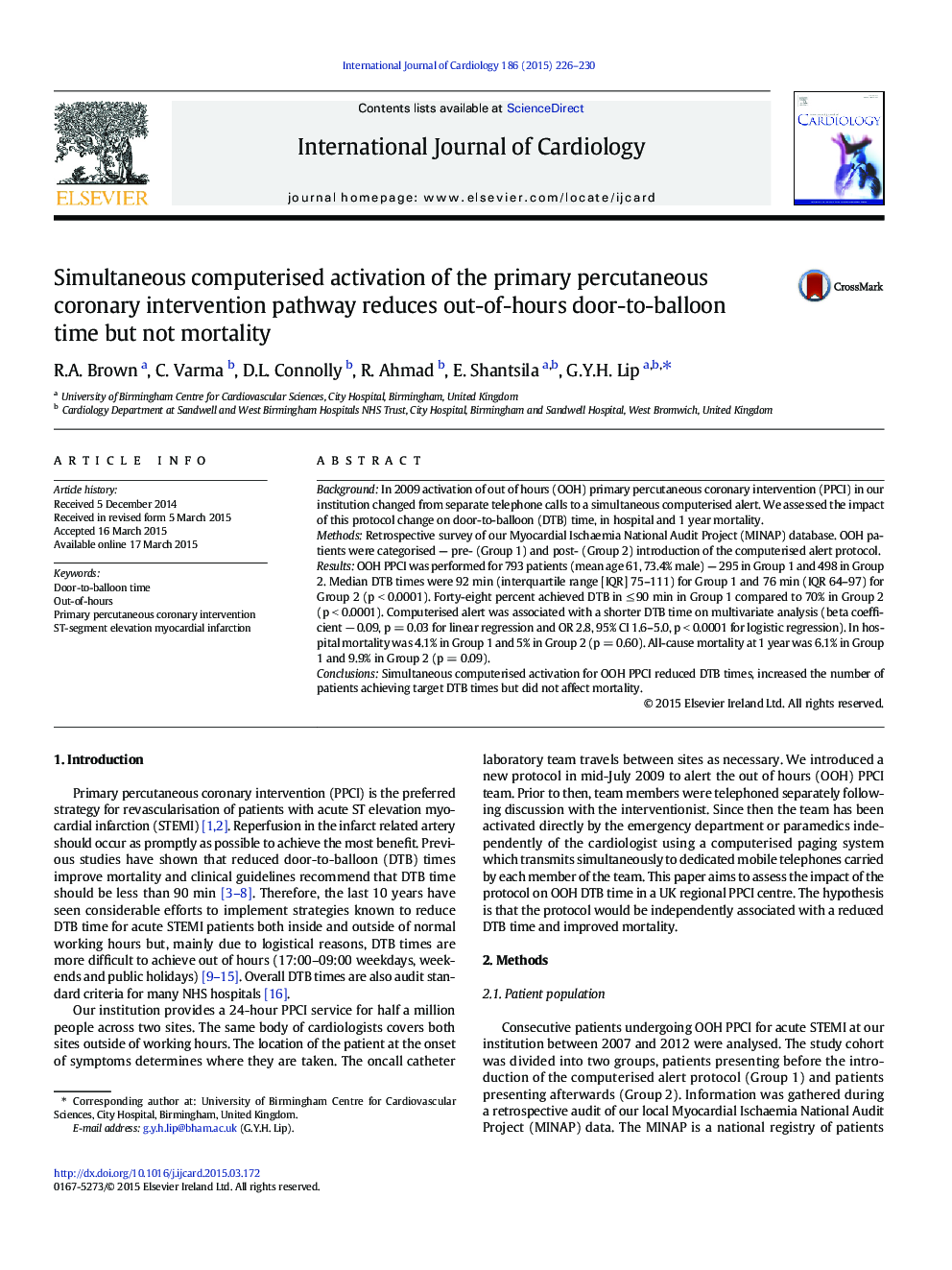| Article ID | Journal | Published Year | Pages | File Type |
|---|---|---|---|---|
| 5967661 | International Journal of Cardiology | 2015 | 5 Pages |
BackgroundIn 2009 activation of out of hours (OOH) primary percutaneous coronary intervention (PPCI) in our institution changed from separate telephone calls to a simultaneous computerised alert. We assessed the impact of this protocol change on door-to-balloon (DTB) time, in hospital and 1 year mortality.MethodsRetrospective survey of our Myocardial Ischaemia National Audit Project (MINAP) database. OOH patients were categorised - pre- (Group 1) and post- (Group 2) introduction of the computerised alert protocol.ResultsOOH PPCI was performed for 793 patients (mean age 61, 73.4% male) - 295 in Group 1 and 498 in Group 2. Median DTB times were 92 min (interquartile range [IQR] 75-111) for Group 1 and 76 min (IQR 64-97) for Group 2 (p < 0.0001). Forty-eight percent achieved DTB in â¤Â 90 min in Group 1 compared to 70% in Group 2 (p < 0.0001). Computerised alert was associated with a shorter DTB time on multivariate analysis (beta coefficient â 0.09, p = 0.03 for linear regression and OR 2.8, 95% CI 1.6-5.0, p < 0.0001 for logistic regression). In hospital mortality was 4.1% in Group 1 and 5% in Group 2 (p = 0.60). All-cause mortality at 1 year was 6.1% in Group 1 and 9.9% in Group 2 (p = 0.09).ConclusionsSimultaneous computerised activation for OOH PPCI reduced DTB times, increased the number of patients achieving target DTB times but did not affect mortality.
